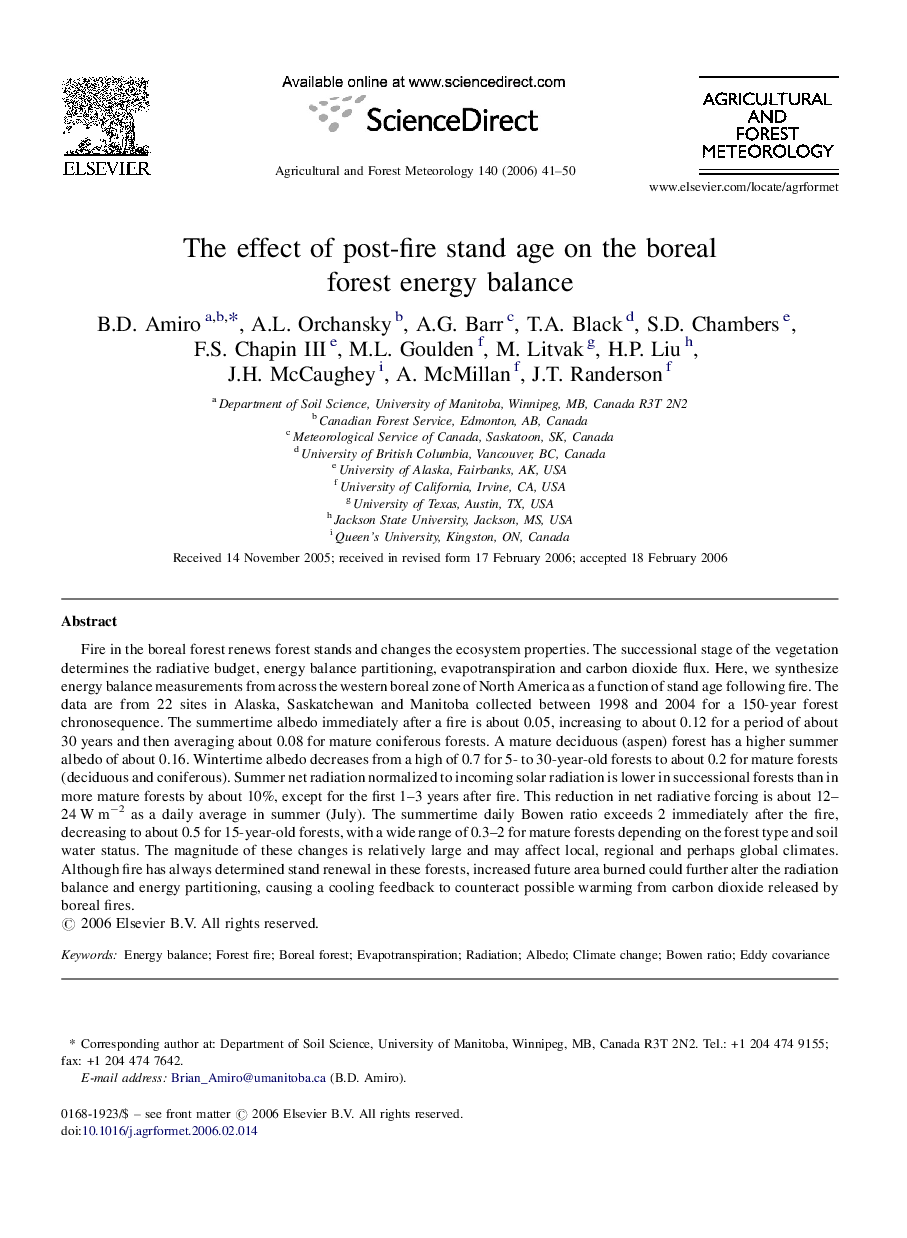| کد مقاله | کد نشریه | سال انتشار | مقاله انگلیسی | نسخه تمام متن |
|---|---|---|---|---|
| 82985 | 158437 | 2006 | 10 صفحه PDF | دانلود رایگان |

Fire in the boreal forest renews forest stands and changes the ecosystem properties. The successional stage of the vegetation determines the radiative budget, energy balance partitioning, evapotranspiration and carbon dioxide flux. Here, we synthesize energy balance measurements from across the western boreal zone of North America as a function of stand age following fire. The data are from 22 sites in Alaska, Saskatchewan and Manitoba collected between 1998 and 2004 for a 150-year forest chronosequence. The summertime albedo immediately after a fire is about 0.05, increasing to about 0.12 for a period of about 30 years and then averaging about 0.08 for mature coniferous forests. A mature deciduous (aspen) forest has a higher summer albedo of about 0.16. Wintertime albedo decreases from a high of 0.7 for 5- to 30-year-old forests to about 0.2 for mature forests (deciduous and coniferous). Summer net radiation normalized to incoming solar radiation is lower in successional forests than in more mature forests by about 10%, except for the first 1–3 years after fire. This reduction in net radiative forcing is about 12–24 W m−2 as a daily average in summer (July). The summertime daily Bowen ratio exceeds 2 immediately after the fire, decreasing to about 0.5 for 15-year-old forests, with a wide range of 0.3–2 for mature forests depending on the forest type and soil water status. The magnitude of these changes is relatively large and may affect local, regional and perhaps global climates. Although fire has always determined stand renewal in these forests, increased future area burned could further alter the radiation balance and energy partitioning, causing a cooling feedback to counteract possible warming from carbon dioxide released by boreal fires.
Journal: Agricultural and Forest Meteorology - Volume 140, Issues 1–4, 30 November 2006, Pages 41–50